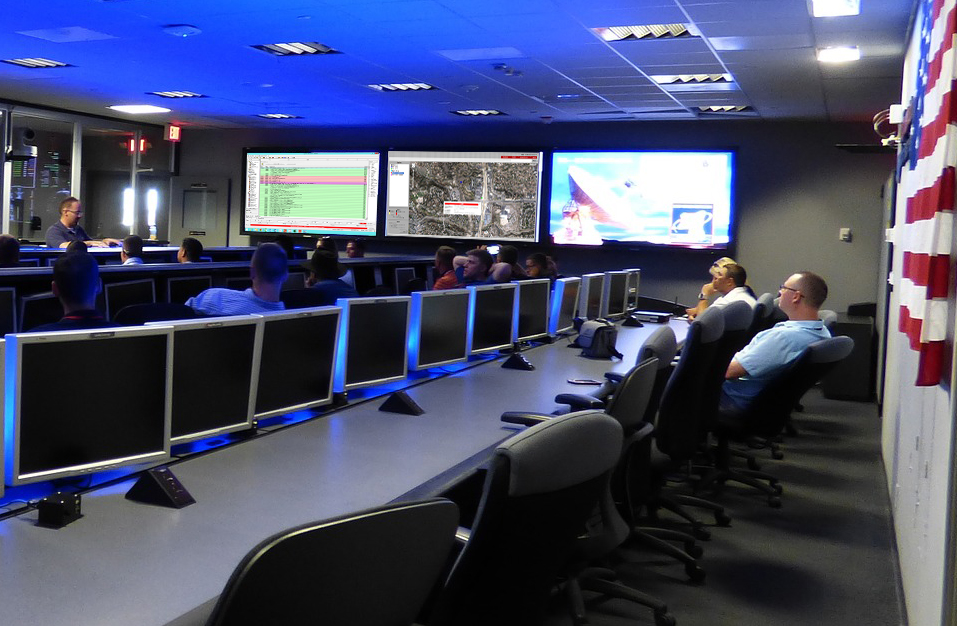The new AVS-01 Alarm Validation Scoring Standard is here, and monitoring center leaders are already implementing it to streamline their alarm response and give public safety professionals and law enforcement agencies critical context and support in responding to threats.
Let’s explore how this standard is improving security operations and raising the bar for industry best practices–plus how you can make the most of it.
What is AVS-01?
First, some brief background: the AVS-01 standard is the result of close collaboration between public safety officials and the alarm industry. When they looked at alarm response as a whole, they identified an opportunity to improve coordination, response time, and resource efficiency by standardizing how threats were communicated.
The official standard was developed by The Monitoring Association (TMA) and accredited by ANSI in late 2023. More specifically, it is called the ANSI/TMA AVS-01-2023 Standard, and its goal is ultimately to standardize emergency communications between central stations and 911 centers.
This standardized classification system assigns each unauthorized human activity detected by an alarm system a score from Level 0 to Level 4. In doing so, AVS-01 intends to reduce uncertainty, miscommunication, and hesitation in responding to threats.
Here is how alarms are scored based on the AVS-01 standard:
- Level 0 = “No call for service.”
- Level 1 = “Call for service with limited to no additional information.”
- Level 2 = “Call for service with confirmed or ‘highly probable’ human presence with unknown intent.”
- Level 3 = “Call for service with confirmed threat to property.”
- Level 4 = “Call for service with confirmed threat to life.”
Importantly, AVS-01 was designed to make the most of your current workflow. It uses data that you already have, translating it into measurable alarm levels for a standardized response. When your operators use this scoring scale, they should be able to better assess and communicate critical information about possible threats.
This helps to establish the severity and credibility of every alert coming through your center, so that law enforcement can efficiently allocate resources and prioritize how they respond. It also enhances officer safety because it provides greater context and situational awareness. This verified, validated intel can also streamline the emergency response and improve the chances of apprehending bad actors.
Ultimately, implementing the AVS-01 standard underscores the professionalism and credibility of your center–both as a trusted partner to law enforcement agencies and as a trusted protector of valuable assets and lives.
Once you know it, the classification system feels intuitive, but the next part may not be: how exactly do you implement this standard in your organization? That’s where we can help.

Implementing AVS-01
While participation in AVS-01 is voluntary, it can hugely benefit your organization: it modernizes your procedures and further establishes your credibility with local law enforcement.
To successfully implement AVS-01, you will need to train your team on the scoring system and what each rating means. You should also run a few sample threat scenarios to build everyone’s shared understanding of how each threat would be classified.
With your people on board, the next step is to make sure that AVS-01 is a seamless part of your operations–and that means implementing it across your technology solutions.
There are currently a few different paths to help you understand and implement this critical standard: TMA offers free online training for central station operators, and UL Solutions has an AVS-01 certification program you may be interested in.
TMA’s training consists of three modules covering everything from alarm level classification to recognizing human presence, communicating with ECCs, and avoiding unnecessary calls for service. The total time to complete all three modules varies, but TMA estimates it should take between 75 and 105 minutes.
Meanwhile, UL Solutions allows you to certify your monitoring center or central station, and provides more information for this certification on their website.
Bold Group fully supports AVS-01 and we encourage all of our clients to implement this important new standard. To help, we have created a Sample Action Pattern in our Manitou software platform. If you are using Manitou, adding AVS-01 to your operations just got easier.

How standards make our industry stronger
Industry standards like AVS-01 are important because they help raise our operations to a higher level: they are the best practices designed to make our processes more efficient and our response more effective.
Of course, all this ultimately helps safeguard the lives and property of those entrusted to our care. Every second we can shave off our response, every resource we can make available, every team we can send out at just the right moment: these can all add up to more lives saved and more property and resources secured.
This is why TMA, an ANSI Accredited Standards Developing Organization (SDO), sets these important benchmarks through American National Standards (ANS) like AVS-01.
TMA represents the interests of the monitoring industry, liaising with government and regulatory agencies as well as developing important industry standards like AVS-01.
TMA frequently coordinates with other Standards Development Organizations, including UL, SIA, NFPA, APCO, and NENA. These collaborations and work are a driving force behind other important alarm monitoring standards, including:
- TMA-ATN-01, a set of guidelines for immediately notifying public safety agencies of active threats coming from both human sources and non-traditional alert systems like shot detection or weapons detection.
- APCO/TMA ANS 2.101.3-2021, also known as “ASAP,” a set of protocols for automatically sending alarm data from monitoring centers to emergency communications centers (ECCs) through CAD systems.
- ANSI/TMA CS-V-01-2022, a set of standards designed to minimize false alarms through confirmation and verification–typically via multiple methods, like audio and video–before notifying law enforcement of credible threats.
When your organization embraces TMA industry standards, it embraces a high standard of excellence and a dedication to providing top-notch service when it comes to protecting lives and assets.
With the newest AVS-01 standard, we can take this dedication to the next level. As always, Bold Group is here to assist as you bring this new standard into your organization. Please contact us today to see how our software, Manitou, can support the adaptation of important standards like AVS-01. We are happy to help!
